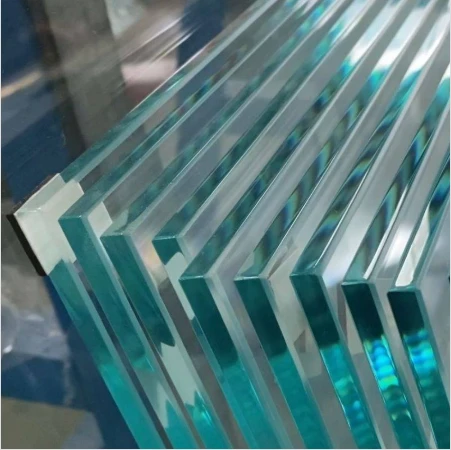Float annealed glass is an essential component in the world of construction and design, celebrated for its versatility and durability. With a seamless surface finish achieved through the float process, which involves floating molten glass on a substrate of molten tin, this type of glass offers both aesthetic and functional benefits that are widely recognized across the industry.

One of the most compelling reasons for the widespread use of float annealed glass is its remarkable clarity and smoothness. This smooth finish is not only pleasing to the eye but also practical for various applications, ensuring minimal distortion in reflections and transmissions. Architects and designers often choose float annealed glass for projects where optical clarity and a sleek appearance are paramount, from modern skyscrapers to intricate interior designs.
The process of annealing, which involves slowly cooling the glass, endows it with improved balance, reducing internal stresses that can lead to breakage.
This makes annealed glass more reliable and safer to use in scenarios where structural integrity is crucial. While it is not as strong as tempered glass, its stability and reliability in diverse applications make it an excellent choice for single-glazed windows, glass doors, and partitions in both commercial and residential structures.

Expertise in creating float annealed glass lies in the precise temperature and time control during the cooling process. This careful handling ensures that the glass maintains its integrity and quality, which is critical for maintaining safety standards and prolonging the lifespan of the glass in practical applications. Leading manufacturers employ strict quality assurance protocols to ensure that every pane meets the high expectations of builders and designers.
float annealed glass
From an authoritative perspective, the demand for float annealed glass is informed by its adaptability in numerous applications. It can be cut, drilled, and shaped with ease, without substantially compromising its structural properties. This adaptability allows for creative and efficient solutions in architectural designs, whether for creating large panes for unobstructed views or intricate shapes for decorative purposes.
Moreover, in a world increasingly focused on sustainability, float annealed glass is a favorable choice for energy efficiency. The potential for enhancing its performance with coatings such as Low-E (low emissivity) expands its functionality, ensuring that buildings can optimize energy consumption by minimizing heat transfer. This aligns with global trends towards eco-conscious building practices.
Trust in float annealed glass is fortified by its history of use and extensive testing. Regulated by industry standards and building codes, its application in construction and design is underpinned by rigorous safety assessments. Builders and project managers recognize its value not only in terms of performance but also in compliance with environmental and safety regulations.
In conclusion, float annealed glass stands as a testament to the harmonious blend of form and function in modern design. Its usage is a marker of expertise among architects and builders, emblematic of a commitment to quality and innovation. Whether employed for practical applications or aesthetic pursuits, its impact is significant and enduring, confirming its position as a cornerstone in the world of glass solutions.



